Chameleon People - [15]
She nodded energetically. ‘Exactly. And it didn’t take long either – Mother and Father got married just eighteen months later. And the five from the group who are still alive have met every five years since, most recently a couple of weeks before my father was killed. Surely that can’t be a coincidence?’
I was open about what I thought: that it could, of course, be a coincidence, but that I very much doubted that it was.
‘Exactly,’ she said, her eyes shining.
As things seemed to be going so well, I took the chance to ask what else her father and mother had told them about this strange old story.
‘Not very much, unfortunately. My father was a kind man, but was quick to put things off. Even when we’ve argued about money in recent years, he has never been mean or harsh with us, just evasive. This old story bothered him a great deal and he did not want to talk about it. I pushed him a couple of times, but he just said that we could perhaps talk about it later. That never happened, of course. Mother was more cagey than Father and completely clammed up when I tried to talk to her about it. She just said that both she and my father had been there, and that they both still wondered what had actually happened, and that it had been extremely painful to lose her only sister like that. I could never get any more out of her. You should ask her about it, she has to tell you now, even if she didn’t want to tell me before.’
I nodded thoughtfully. Then I thanked her for the interesting conversation and asked if I could contact her again once I had looked up the case in the archives. She immediately offered to wait in my office while I looked through the file. We compromised, and she waited outside while I read through the case.
IX
The file from 1932 was disappointingly thin. Initially, it had been marked ‘suspicious death’ and then changed to ‘no case to answer’. My attention was immediately drawn to a couple of photographs of the young woman on a dark velvet sofa. As far as I could see, the woman showed no physical signs of violence or illness of any sort, and was just lying there peacefully, as though asleep. She was slightly shorter than the sofa and had long blonde hair and pale skin. Her body was well shaped, almost like a statue. The photographs made me think of Sleeping Beauty. But Eva Bjølhaugen, born in Sande on 7 January 1911, had never woken up from her deep sleep.
I sat there with the forty-year-old photographs and mused on what secrets she had taken with her to the grave, and what significance they might have for yesterday’s murder.
The reports and statements told me in short that Eva Bjølhaugen had been last seen alive by her boyfriend and four other friends at around five o’clock in the afternoon of 5 March 1932, when she had let herself into her room following a trip into town. And she was found dead in Room 111 at Haraldsen’s Hotel in Ullern at a quarter past eight that very evening. She had arranged to meet the others for dinner at eight o’clock. They had all met in the lobby at the agreed time, and realized that something was wrong when she failed to show up by ten past eight.
Her boyfriend, Hauk Rebne Westgaard, had gone to look for her. Then at twelve minutes past eight he had come back to the others in the lobby. He had told them that the door to her room was locked and he had heard no sign of life when he knocked. Her boyfriend’s concern only increased when he found the key to her door lying on the floor in the corridor, outside his own room.
In his statement, Hauk Rebne Westgaard said that he had been extremely worried about his girlfriend and did not want to enter her room alone. So he ran down to the others and they all entered the room at precisely a quarter past eight to find Eva Bjølhaugen dead on the sofa.
Eva Bjølhaugen’s bed had obviously been used after it had been made up in the morning. But her five companions agreed that there was no sign that anyone else had been there. And the police found no evidence of this either, though they did find fingerprints of all five young people in the room. This was not seen to be suspicious, of course, as they had all been there after she had died, and had also been in there together the evening before. None of them had noticed anything different about Eva Bjølhaugen. She had been in a good mood earlier in the day and generally had an optimistic outlook on life. She had finished school with good grades and had talked about studying languages at the University of Oslo. It was clearly stated in the report that there was ‘no history of depression’.
The rest of the group had stayed in rooms on the same corridor. A certified transcript of the reception book documented the following:
Room 112: Solveig Thaulow, 22, Sande.
Room 113: Oda Bjølhaugen, 23, Sande.
Room 114: Hauk Rebne Westgaard, 25, Holmestrand.
Room 115: Per Johan Fredriksen, 25, Holmestrand.
Room 116: Kjell Arne Ramdal, 25, Tønsberg.
The bed in Room 111 had been used after it had been made up in the morning, but according to the police there was no technical evidence of sexual activity.
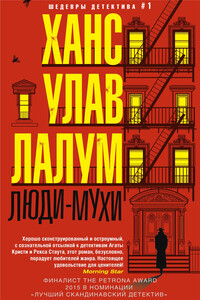
Убит бывший лидер норвежского Сопротивления и бывший член кабинета министров Харальд Олесен. Его тело обнаружено в запертой квартире, следов взлома нет, орудие убийства отсутствует. На звук выстрела к двери Олесена сбежались все соседи, но никого не увидели. Инспектор уголовного розыска Колбьёрн Кристиансен считает, что убийство, скорее всего, совершил кто-то из них. Более того, он полагает, что их показания лживы.
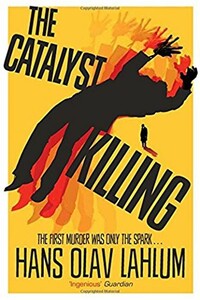
The third mystery in the hugely compelling, bestselling international crime series from Norway's answer to Agatha Christie, Hans Olav Lahlum, The Catalyst Killing will have you guessing to the final clue. The first murder was only the spark… 1970: Inspector Kolbjorn Kristiansen, known as K2, witnesses a young woman desperately trying to board a train only to have the doors close before her face. The next time he sees her, she is dead… As K2 investigates, with the help of his precocious young assistant Patricia, he discovers that the story behind Marie Morgenstierne's murder really began two years ago, when a group of politically active young people set out on a walking tour in the mountains.
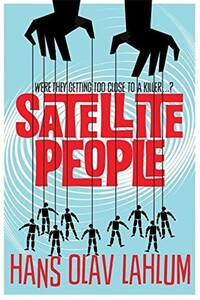
A gripping, evocative, and ingenious mystery which pays homage to Agatha Christie, Satellite People is the second Norwegian mystery in Hans Olav Lahlum's series. Oslo, 1969: When a wealthy man collapses and dies during a dinner party, Norwegian Police Inspector Kolbjorn Kristiansen, known as K2, is left shaken. For the victim, Magdalon Schelderup, a multimillionaire businessman and former resistance fighter, had contacted him only the day before, fearing for his life. It soon becomes clear that every one of Schelderup's 10 dinner guests is a suspect in the case.
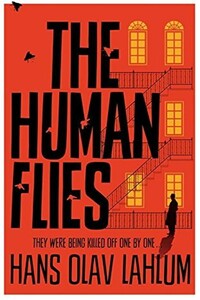
Oslo, 1968: ambitious young detective Inspector Kolbjorn Kristiansen is called to an apartment block, where a man has been found murdered. The victim, Harald Olesen, was a legendary hero of the Resistance during the Nazi occupation, and at first it is difficult to imagine who could have wanted him dead. But as Detective Inspector Kolbjorn Kristiansen (known as K2) begins to investigate, it seems clear that the murderer could only be one of Olesen's fellow tenants in the building. Soon, with the help of Patricia – a brilliant young woman confined to a wheelchair following a terrible accident – K2 will begin to untangle the web of lies surrounding Olesen's neighbors; each of whom, it seems, had their own reasons for wanting Olesen dead.
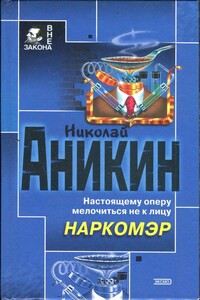
Тупик. Стена. Старый кирпич, обрывки паутины. А присмотреться — вроде следы вокруг. Может, отхожее место здесь, в глухом углу? Так нет, все чисто. Кто же сюда наведывается и зачем? И что охраняет тут охрана? Да вот эту стену и охраняет. Она, как выяснилось, с секретом: время от времени отъезжает в сторону. За ней цех. А в цеху производят под видом лекарства дурь. Полковник Кожемякин все это выведал. Но надо проникнуть внутрь и схватить за руку отравителей, наживающихся на здоровье собственного народа. А это будет потруднее…
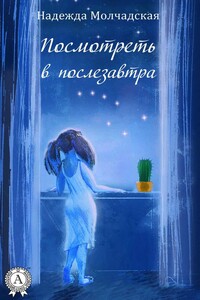
«Посмотреть в послезавтра» – остросюжетный роман-триллер Надежды Молчадской, главная изюминка которого – атмосфера таинственности и нарастающая интрига.Девушка по имени Венера впадает в кому при загадочных обстоятельствах. Спецслужбы переправляют ее из закрытого городка Нигдельск в Москву в спецклинику, где известный ученый пытается понять, что явилось причиной ее состояния. Его исследования приводят к неожиданным результатам: он обнаруживает, что их связывает тайна из его прошлого.
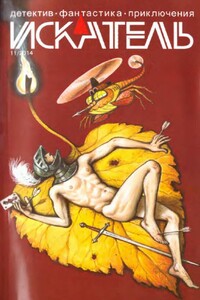
«ИСКАТЕЛЬ» — советский и российский литературный альманах. Издаётся с 1961 года. Публикует фантастические, приключенческие, детективные, военно-патриотические произведения, научно-популярные очерки и статьи. В 1961–1996 годах — литературное приложение к журналу «Вокруг света», с 1996 года — независимое издание.В 1961–1996 годах выходил шесть раз в год, в 1997–2002 годах — ежемесячно; с 2003 года выходит непериодически.Содержание:Анатолий Королев ПОЛИЦЕЙСКИЙ (повесть)Олег Быстров УКРАДИ МОЮ ЖИЗНЬ (окончание) (повесть)Владимир Лебедев ГОСТИ ИЗ НИОТКУДА.
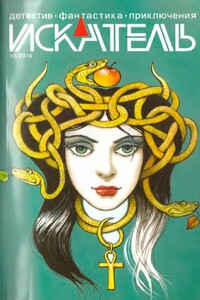
«ИСКАТЕЛЬ» — советский и российский литературный альманах. Издается с 1961 года. Публикует фантастические, приключенческие, детективные, военно-патриотические произведения, научно-популярные очерки и статьи. В 1961–1996 годах — литературное приложение к журналу «Вокруг света», с 1996 года — независимое издание.В 1961–1996 годах выходил шесть раз в год, в 1997–2002 годах — ежемесячно; с 2003 года выходит непериодически.Содержание:Олег Быстров УКРАДИ МОЮ ЖИЗНЬ (повесть);Петр Любестовский КЛЕТКА ДЛЯ НУТРИИ (повесть)
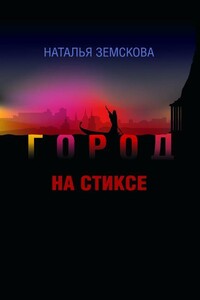
Наталья Земскова — журналист, театральный критик. В 2010 г. в издательстве «Астрель» (Санкт-Петербург) вышел её роман «Детородный возраст», который выдержал несколько переизданий. Остросюжетный роман «Город на Стиксе» — вторая книга писательницы. Молодая героиня, мечтает выйти замуж и уехать из забитого новостройками областного центра. Но вот у неё на глазах оживают тайны и легенды большого губернского города в центре России, судьбы талантливых людей, живущих рядом с нею. Роман «Город на Стиксе» — о выборе художника — провинция или столица? О том, чем рано или поздно приходится расплачиваться современному человеку, не верящему ни в Бога, ни в черта, а только в свой дар — за каждый неверный шаг.
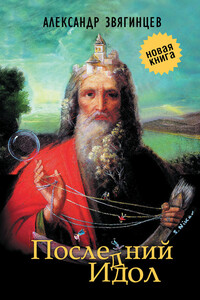
В сборник «Последний идол» вошли произведения Александра Звягинцева разных лет и разных жанров. Они объединены общей темой исторической памяти и личной ответственности человека в схватке со злом, которое порой предстает в самых неожиданных обличиях. Публикуются рассказы из циклов о делах следователей Багринцева и Северина, прокуроров Ольгина и Шип — уже известных читателям по сборнику Звягинцева «Кто-то из вас должен умереть!» (2012). Впервые увидит свет пьеса «Последний идол», а также цикл очерков писателя о событиях вокруг значительных фигур общественной и политической жизни России XIX–XX веков — от Петра Столыпина до Солженицына, от Александра Керенского до Льва Шейнина.